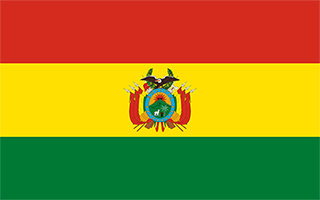Facts and Data
Webpages:
Official Unesco Page
View photos from OUR PLACE the World Heritage collection
Basis Data:
Unesco World heritage since: 1991
Size of heritage:
Coordinates:
Longitude: -64,741°
Latitude: -18,957°
Summary
Sucre, the first capital of Bolivia, was founded by the Spanish in the first half of the 16th century. Its many well-preserved 16th-century religious buildings, such as San Lázaro, San Francisco and Santo Domingo, illustrate the blending of local architectural traditions with styles imported from Europe.
Location on Map
Show bigger map on Openstreetmap
Historic City of Sucre: A Glimpse into Bolivia's Rich Cultural Heritage
The Historic City of Sucre, located in the Department de Chuquisaca, Province Oropeza, is a UNESCO World Heritage site that offers a captivating journey into Bolivia's vibrant history and cultural legacy. With its well-preserved colonial architecture and significant role in the country's struggle for independence, Sucre stands as a testament to Bolivia's past and present.
A Brief History
Sucre, originally known as La Plata, was founded in 1538 by Spanish conquistadors. It quickly became an important administrative and commercial center due to its strategic location and rich silver mines. The city played a crucial role during the Spanish colonial period, serving as the capital of the Audiencia de Charcas, a judicial district of the Viceroyalty of Peru.
During the 19th century, Sucre became a hotbed of revolutionary fervor. It was in this city that Bolivia's struggle for independence began, with the signing of the Declaration of Independence on August 6, 1825. Sucre was subsequently named the capital of Bolivia, a title it held until 1898 when it was replaced by La Paz.
Architectural Marvels
The Historic City of Sucre boasts a remarkable collection of colonial architecture, characterized by its well-preserved white-washed buildings and red-tiled roofs. The city's historic center, known as the Casco Viejo, is a labyrinth of narrow streets lined with grand mansions, churches, and public buildings.
One of the most iconic landmarks in Sucre is the Metropolitan Cathedral, a stunning example of Baroque architecture. Built in the 16th century, the cathedral features intricate carvings, ornate altars, and a beautiful central dome. Another architectural gem is the Recoleta Monastery, founded in 1601, which offers panoramic views of the city and houses a museum showcasing religious art and artifacts.
A Living Heritage
Today, Sucre remains a vibrant city that seamlessly blends its rich history with modernity. The Historic City of Sucre is not merely a relic of the past but a living heritage that continues to thrive. The city's streets are filled with bustling markets, lively cafes, and cultural events that celebrate its diverse traditions.
Furthermore, Sucre is home to several prestigious educational institutions, including the renowned Universidad Mayor Real y Pontificia de San Francisco Xavier de Chuquisaca. This university, founded in 1624, has played a pivotal role in shaping Bolivia's intellectual and cultural landscape.
Preservation Efforts
Recognizing the significance of Sucre's cultural heritage, the Bolivian government and local authorities have made concerted efforts to preserve and protect the city's historic center. Strict regulations are in place to ensure that any new construction or renovations adhere to the traditional architectural style, maintaining the city's unique character.
Additionally, ongoing restoration projects have been undertaken to safeguard the city's architectural treasures. These efforts have not only preserved the physical structures but have also contributed to the revitalization of the local economy through tourism.
Conclusion
The Historic City of Sucre stands as a testament to Bolivia's rich cultural heritage and its pivotal role in the country's history. With its well-preserved colonial architecture, vibrant cultural scene, and ongoing preservation efforts, Sucre continues to captivate visitors and locals alike, offering a glimpse into Bolivia's past and present.
